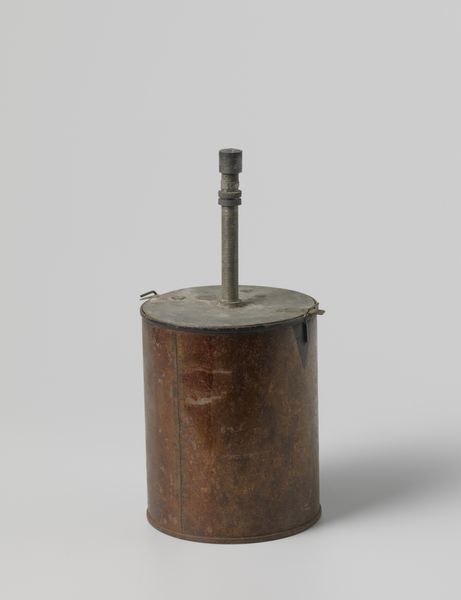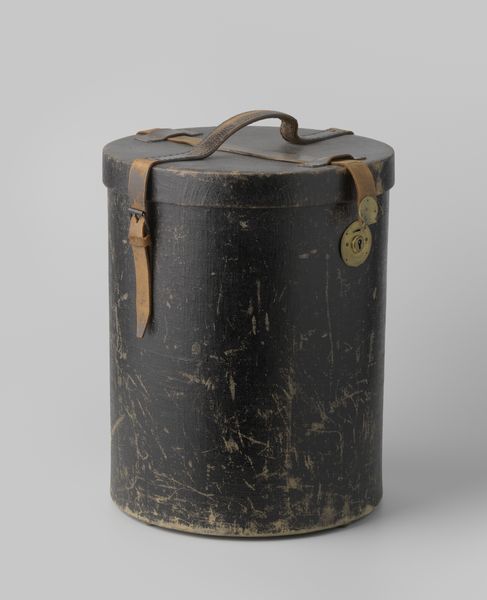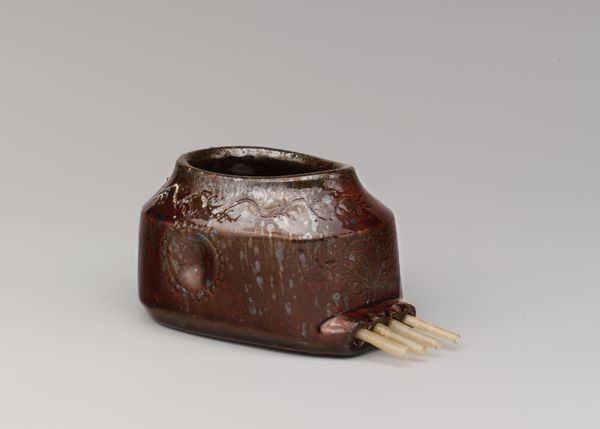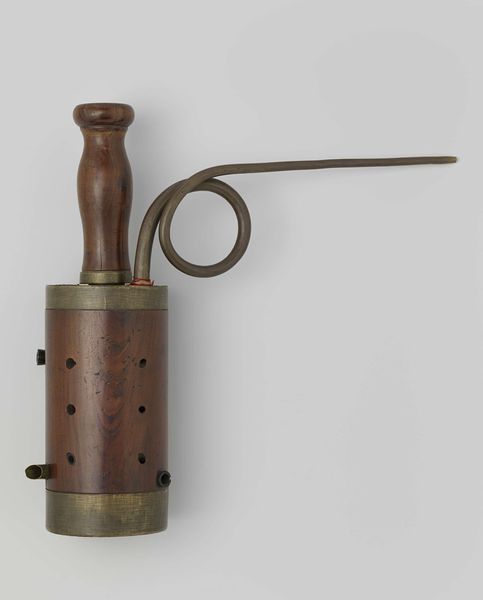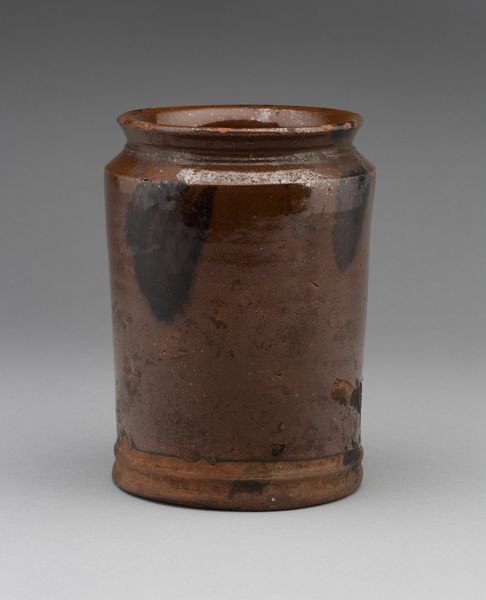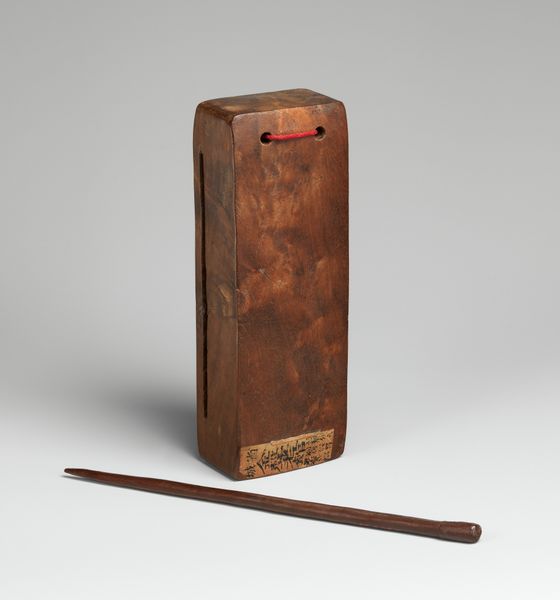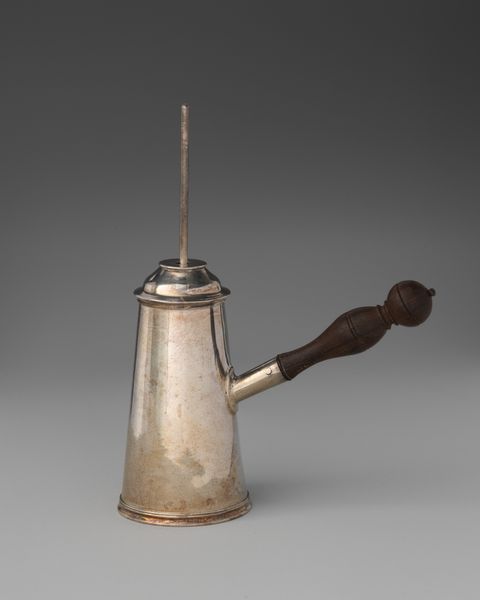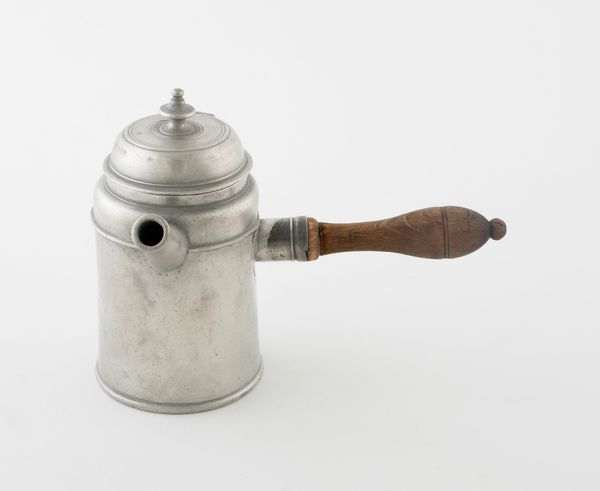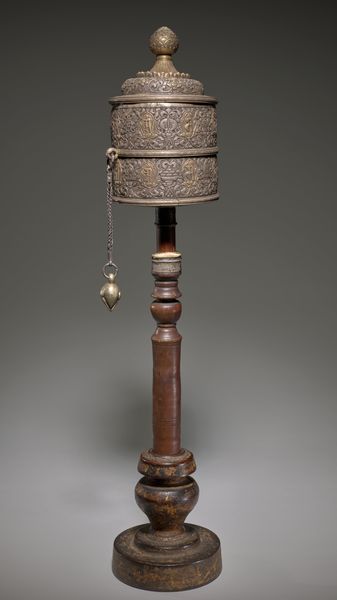
metal, ceramic
#
metal
#
ceramic
#
ceramic
#
men
#
musical-instrument
Dimensions: H.: 19 cm (7-1/2 in.); Diam.: 10.8 cm (4-1/4 in.)
Copyright: Public Domain
Editor: This is the “Mouth Organ,” created sometime between 1825 and 1845, and currently held at the Metropolitan Museum of Art. It seems to be constructed from ceramic and metal. Its presentation is very unusual, especially considering the period. How do you see its significance, particularly considering the unusual use of materials? Curator: The 'Mouth Organ' intrigues me because it so overtly combines what were, and still often are, seen as distinct categories: art, craft, and function. We have ceramic, a material strongly associated with utility and the domestic, alongside metal, suggestive of industry and potentially even mass production, all combined into a musical instrument. I’d ask us to consider how this piece challenges hierarchies within artistic creation. How does the use of seemingly ‘common’ materials affect our understanding of artistry at that time? Editor: So, you are suggesting the piece questions traditional notions of artistic value? Curator: Precisely. It prompts us to consider who had access to these materials, and under what conditions were they produced? We might explore labor practices in metalworking and ceramics during the early 19th century. Who were the craftspeople involved in its manufacture, and what socio-economic position did they hold? Was this instrument meant for personal use, or as a demonstration of skill? What can it tell us about early manufacturing and consumption patterns in musical instruments? Editor: It sounds like understanding the social and economic contexts of the materials gives us a much richer perspective. I never thought about it like that! Curator: It shows how seemingly 'humble' objects can tell grand stories. The value isn't solely in aesthetics, but in the means of production. Now I wonder, how did they actually make it?
Comments
No comments
Be the first to comment and join the conversation on the ultimate creative platform.

